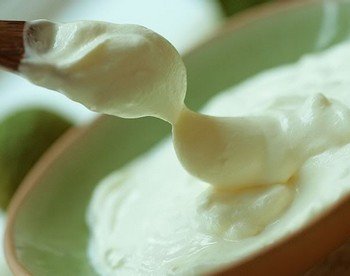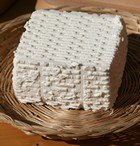How to Make Yogurt with our Easy Homemade Yogurt Recipes
What is in Yogurt?
If you want to have a Greek style yogurt then you will have to add powdered milk to your yogurt. But basically, what is in yogurt is just plain milk with a starter culture that either comes from a commercially bought active yogurt or from one of your own previously made yogurts.
What Milk can you Use to Make Yogurt?
If you do use low fat or non-fat milk for making yogurt you will end up with a thinner consistency that won't thicken.
How to Make Yogurt and the Importance of the Yogurt Starter Culture
Once the starter culture has been added to the milk, the temperature of the milk should neither be too hot or too cold.
If the milk is too hot the culture will be killed off. If the starter culture was added to milk that was too cold then the culture's actions will be retarded.
However, as long as your milk is around blood heat then the yogurt culture starter will do its thing.
And where do you get a yogurt starter culture from? From either store-bought live yogurt or from a bottle of your own homemade yogurt.
If you are using your own starter cultures you will find, over time, that they stop working as well, and you will need to go back to the store and buy some more of the commercial yogurt.
How to Make Yogurt Successfully
There are a couple of yogurt making tips that I will pass on.- Make sure that all your equipment is scrupulously clean. Clean with either a weak household bleach solution or clean with boiling water.
- Only use whole milk for best results
- Only add the culture starter to the milk at the right temperature.
- Keep the milk mixture at a constant temperature.
- Don't keep it too long as the yogurt will be tart and unpleasant.
Making Yogurt without Thermometers
All the yogurt recipes below are made without using thermometers.
| A Countryfarm Lifefstyles Tip: If you are like me, I like my yogurt to be fairly firm. In order to get yogurt to firm set when making try mixing your starter culture with an equal amount of evaporated milk. Then adding a good cupful of powered milk to the warmed fresh milk and mixing it all together. This has worked well for me in the past, and no doubt you will enjoy the same success. |
We have more easy yogurt recipes for you. Here is a yogurt recipe to make fortified yogurt:
How to Make Yogurt with this Simple Yogurt Recipe
Here are some step-by-step instructions on making yogurt.
2 liters full cream or whole milk
6 tablespoons instant milk powder
Put the milk in a pot and stir in the milk powder. Over a medium heat slowly bring the milk to the point where small bubbles begin to form on the surface of the milk. Stir occasionally to make sure that the milk is not burning.
When the small bubbles form turn the heat down to low and keep it at a gentle simmer for 4 minutes.
Take the pot off the heat and set it to cool in a basin or sink filled with cold water. After about 15 minutes test the milk to see if it has reached blood heat. To do this, drip a little milk onto your wrist. It should feel pleasantly warm; more than lukewarm, but not hot.
If it is too cold, warm it up again slightly on the cooker to get it back to being warm.
When the milk is at the correct temperature, remove any skin that may have formed, and gently stir the yogurt starter culture through the milk.
Pour into your container and leave to set in a warm place. The setting time will be about 6 hours. Check your yogurt after this time. It should have a consistency of firm custard with very little clear liquid (whey) sitting on the top.
The longer you leave it the more whey will appear and the more tart it will taste.
Once set you can put your yogurt in the fridge. It will keep for about 10 days. However, the longer you leave it the more sour it will become.
How to Make Fortified Yogurt using a Vacuum Flask
 Add 1/2 cup powdered
skim milk to 1
quart fresh whole milk, and beat with an electric mixer. Place in a
saucepan, and heat until it is good and hot, but do not
let the milk reach boiling point.
Add 1/2 cup powdered
skim milk to 1
quart fresh whole milk, and beat with an electric mixer. Place in a
saucepan, and heat until it is good and hot, but do not
let the milk reach boiling point. You should be able to take the milk and drop some into the palm of your hand. It should feel hot, but shouldn't burn.
Now add 3 tablespoons of ready made yogurt. Pour this mixture into a thermoflask and leave over night. In the morning you will have delicious homemade yogurt.
If you don't have a thermoflask or vacuum flask, you can pour the milk mixture into a milk bottle, double pan, or any utensil, and place it in warm water near a radiator or somewhere warm.
Cover with a blanket, much the same way as you would for making bread dough rise. Your yogurt should be made within 5 - 6 hours. Do not move it, or disturb it during the incubation period as it will not set properly.
How to Make Yogurt in a Crockpot
I have seen all sorts of complicated methods of making yogurt this way, and really so unnecessary. Take your crockpot and turn it on to low.
Heat 1/2 gallon (8 cups) milk up in a pot over a low heat to blood heat. Test the heat on your wrist as you would a baby's bottled milk. Remove from heat and add 1/2 cup of plain, store-bought yogurt that has live cultures in it. Without the live cultures your yogurt making will fail.
Place the warm milk mixture into the crockpot and replace the lid. Turn the crockpot off. Wrap in a blanket and place in the oven with just the light on to give off some much needed heat.
Leave for 8 - 10 hours. During this time you may need to turn the crockpot back on and then off to make sure that the milk mixture is always kept warm at blood heat.
You just need to watch it carefully because you want to maintain an even temperature without either killing off the fermentation process or cooking the milk.
Also, remember, that the longer you leave the yogurt to ferment, the thicker it will get, but it will also be more tart.
How to Make Fat-Free Yogurt
Follow the above recipe for making yogurt, but instead of using whole milk in your recipe, substitute it with skim milk. By doing this you have reduced your calorie intake.How to Make Greek Yogurt (One portion)
Follow the above recipe for making basic yogurt. Once the yogurt has set, line a kitchen sieve with some cheesecloth, or a clean tea-towel or even 4 pieces of kitchen paper.Pour a cup of the made yogurt into the line sieve. Suspend the sieve over a bowl where it can catch the whey that will drip from the yogurt. Refrigerate overnight if you want really thick yogurt, or let the whey separate over 4 - 6 hours at room temperature.
Add 1 teaspoon of honey for taste. You can use the yogurt whey when making bread as a substitute for some of the water you would normally use, or you can use it to make ricotta cheese.
How to Make Raspberry Yogurt
Learn how to make yogurt with different fruits of your choice. This one uses raspberries, but you can choose a variety of fruits. Mix 1 cup thick yogurt, 1/2 cup fresh, canned or frozen berries. Place in dessert glasses and refrigerate until you need them. Serve with a drizzle of honey on the top.A Simple Yogurt Recipe for Breakfast
Take either stewed apples, prunes or apricots, layer in a tall glass in alternating levels with homemade yogurt, fruit and toasted museli. Top with more yogurt and a sprinkle of nuts.YOGURT MAKING TROUBLESHOOTING
What went wrong with my yogurt? How many times has your yogurt not quite turned out the way you expected? This happens to all of us from time to time. Here are some guidelines on what the problem was and how to fix it for next time.- Problem 1: Yogurt does not have a custard-like body but rather is soft and not smoothly solidified.
Solution: Wait until the milk cools down to 110°F before inoculating.
Causes: Both high and low incubation temperatures slow down culture growth and increase the amount of time necessary for coagulation.
Solution: Use a thermometer to control temperature.
Causes: Extended storage of the starter culture reduces the number of live bacteria in the culture.
Solution: Use more starter culture in the recipe or obtain a new culture.
Causes: Contamination of the culture with undesirable bacteria.
Solution: Get a new culture. Also clean and sanitize yogurt containers each time yogurt is made.
Causes: Omitted or added an insufficient amount of nonfat dry milk to the milk. Solution: Accurately measure or weigh the nonfat dry milk.
Causes: Over-agitation before incubation may slow down starter activity.
Solution: Combine starter culture and milk by mixing gently.
- Problem 2: Yogurt tastes bad.
Solution: Obtain new culture.
Causes: Yogurt has over-set or incubated too long.
Solution: Refrigerate yogurt immediately after a firm coagulum has formed.
Causes: Overheating of the milk causes an off-flavor.
Solution: Do not overheat the milk.
- Problem 3: Whey collects on the surface of the yogurt.
Solution: Refrigerate yogurt immediately after a firm coagulum has formed.
Causes: Yogurt was bumped, moved or stirred during incubation.
Solution: Place yogurt in a quiet location where it will not be disturbed.
Here is a Video showing you How to Make Yogurt - Greek Style
You can Add your own Yogurt Recipes!
We have lots of pages where you can contribute to throughout this website. We love hearing from our readers, and hope you will be one of those we hear from too. Look around our homesteading website. If you have some yogurt recipes of your own, please submit them. All you need to do is type and submit. We will do the rest!
Leave a Comment
Do you have anything that you would like to add after reading this page? We would love to hear your thoughts. If you can add additional information to what has been written here you will be adding value to the website! No need to have any special skills - just type and submit. We will do the rest!
Other Comments
Click below to see comments from other visitors to this page...
What type of yogurt starter can you use? 




when you make homemade yogurt, can you use the stuff from the dairy isle already made or do you have to buy yogurt starter?
Where to Learn how to make Yogurt Commercially? Not rated yet
Please where can i learn how to make yogurt commercially. I am in Nigeria.
Did you find this page helpful?
Sharing is a way of saying, "Thanks!"









New! Comments
Do you have something of value to add? Leave me a comment in the box below.